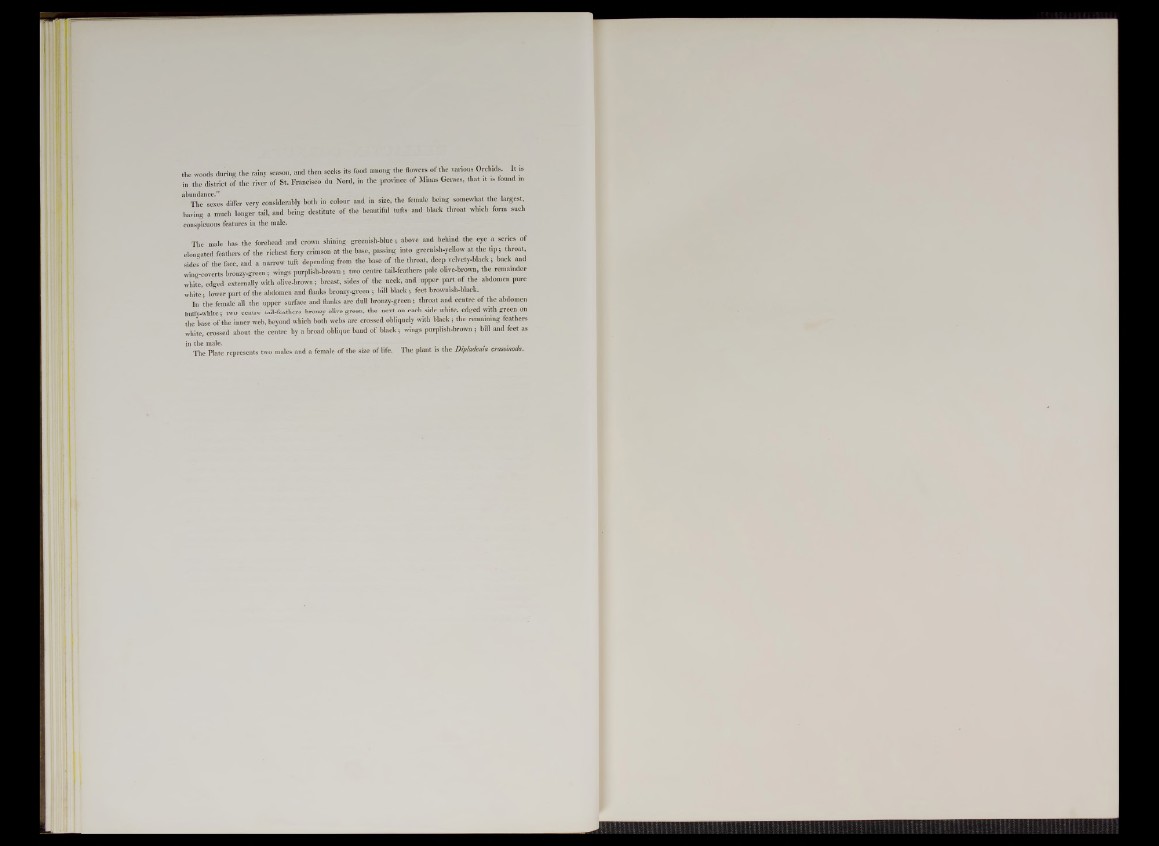
the woods during the rainy season, and then seeks its food among the flowers of the various Orchids. It is
in the district of the river of St. Francisco du Nord, in the province of Minas Geraes, that it is found m
^ The^exes differ very considerably both in colour and in size, the female being somewhat the largest,
having a much longer tail, and being destitute of the beautiful tufts and black throat which form such
conspicuous features in the male.
The male has the forehead and crown shining greenish-blue; above and behind the eye a series of
elongated feathers of the richest fiery crimson at the base, passing into greenish-yellow at the tip ; throat,
sides of the face and a narrow tuft depending from the base of the throat, deep velvety-black; back and
wing-coverts bronzy-green; wings purplish-brown I two centre tail-feathers pale olive-brown, the remainder
white, edged externally with olive-brown; breast, sides of the neck, and upper part of the abdomen pure
white ■ lower part of the abdomen and flanks bronzy-green ; bill black ; feet brownish-black.
In the female all the upper surface and flanks are dull bronzy-green; throat and centre of the abdomen
buffy-white; two centre tail-feathers bronzy olive-green, the next on each side white, edged with green on
the base of the inner web, beyond which both webs are crossed obliquely with black ; the remaining feathers
white, crossed about the centre by a broad oblique band of black; wings purplish-brown ; bill and feet as
in the male. . . .
The Plate represents two males and a female of the size of life. The plant is the D.pladema crassmoda.